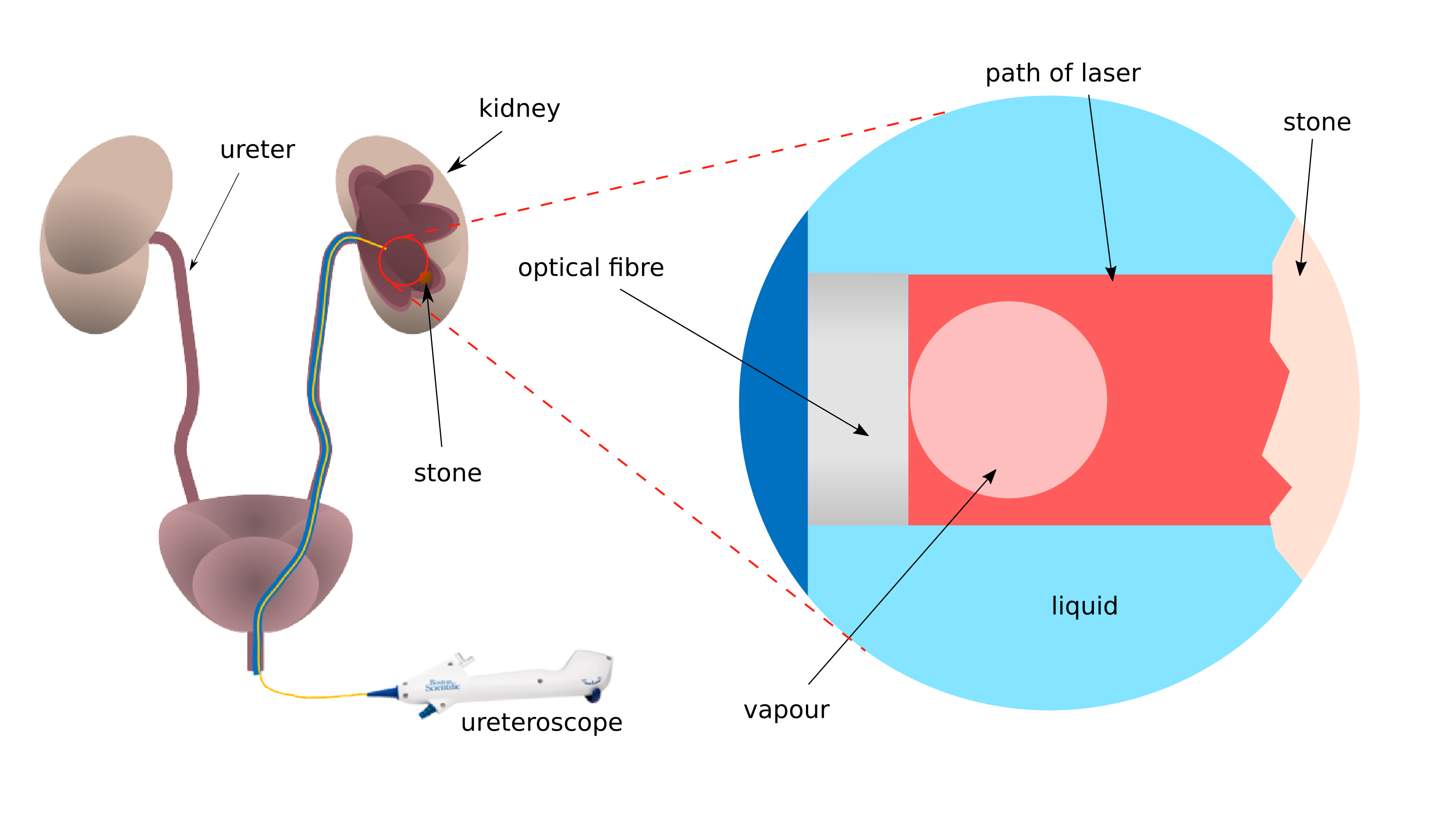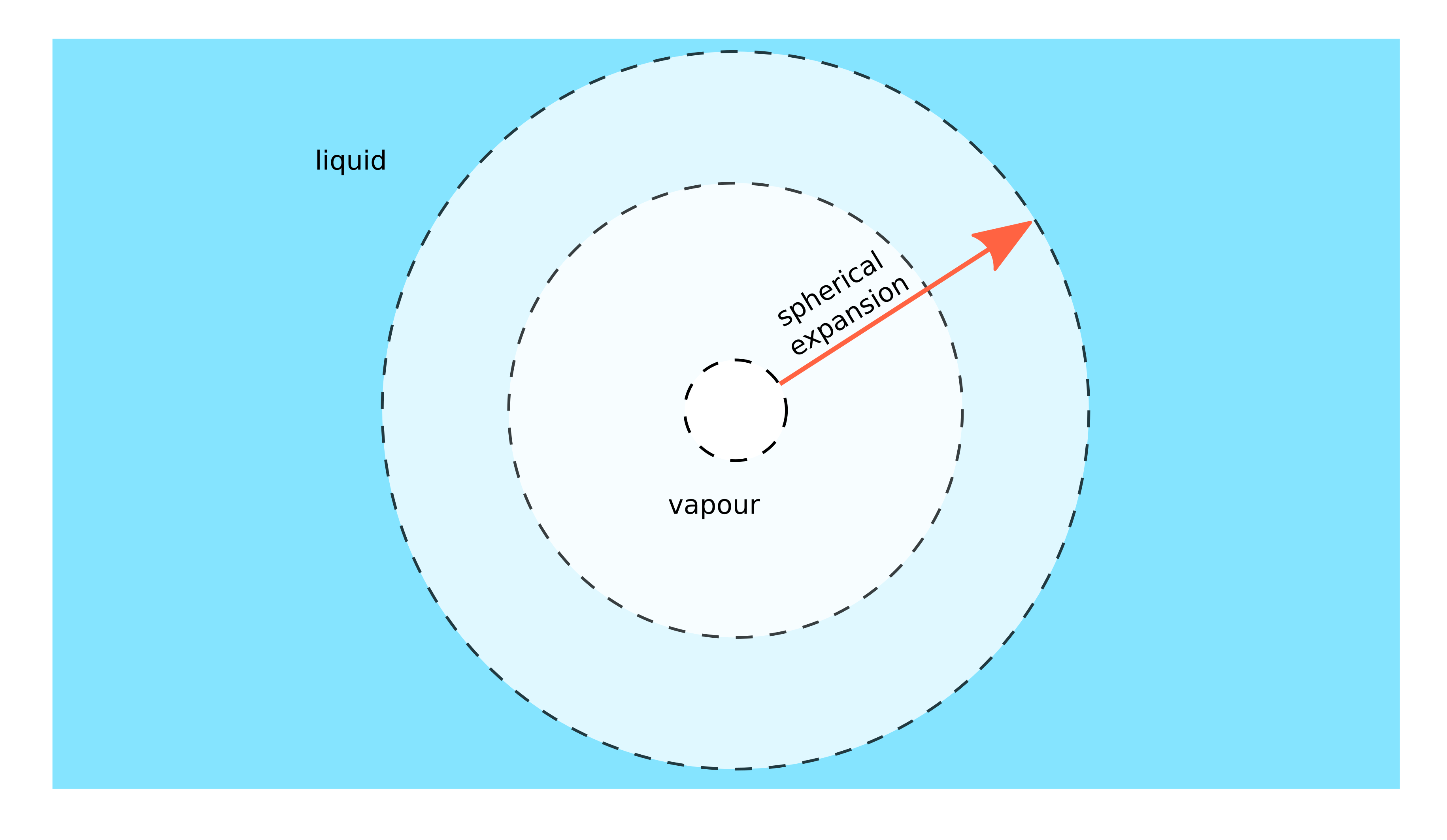Modelling laser-induced vapour bubbles for lithotripsy treatment of kidney stones
- Researcher: Sophie Abrahams

- Academic Supervisors: Sarah Waters, Derek Moulton, Robin Cleveland, Ben Turney
- Industrial Supervisor: Aditi Ray
Background
One of the most common treatments for kidney stones is ureteroscopy and laser lithotripsy, usually referred to as just ‘ureteroscopy’. In this process, a ureteroscope, a tube with a small camera and light at the tip, is passed through the urethra and bladder and into the ureter or kidney to the position of the stone. The ureteroscope contains a hollow cylindrical working channel in which tools, including an optical laser fibre, are inserted. The stone is broken by laser lithotripsy, in which a packet of laser pulses is directed at the kidney stone to either fragment it into smaller chunks that can be retrieved individually or to "dust'' it into pieces that are so small they can be flushed out.
Although lasers have been employed in clinical practice for nearly 40 years, relatively little is known about the mechanism by which they fragment or dust kidney stones. Clinical lasers for kidney stone surgery have improved rapidly in the last few years delivering energy in different patterns, at higher frequencies and higher power. A trial-and-error method is commonly employed by industry to determine to most effective laser settings for different purposes.
It is believed that the primary mechanism for stone breaking is the transfer of thermal energy from the laser to the kidney stone. Some laser energy is also transferred to the surrounding fluid in the kidney, causing heating and phase changes and hence the formation of vapour bubbles. The vapour bubbles can, in some cases, be beneficial to the fragmentation procedure: an initial laser pulse produces a vapour bubble between the laser fibre and the stone, and, until it collapses, subsequent laser pulses pass through this bubble. As vapour absorbs significantly less energy than liquid, the bubble allows more of the energy from the subsequent pulses to reach the stone.
This project studies the transfer of energy between the laser, bubble and stone to predict the dynamics of the fluid and the fragmentation or dusting of the stone under different laser settings. The mathematical model is validated with experimental work; it is anticipated that this modelling and validation approach will reduce the need for trial-and-error methods and will provide justification regarding the use of specific settings.

Figure 1: Schematic of ureteroscope containing an optical fibre inserted into the kidney (not to scale).
Progress
The project is split into two parts, the first of which is the focus of our current work and looks at the dynamics of bubbles due to vapourisation of liquid in the kidney. We have developed a mathematical model for a spherical bubble in an infinite region of water when the laser is ‘pulsed’. We are testing the expansion of the bubble when varying parameters such as pulse duration, number of pulses, and laser intensity.
The collapse phase of the bubble is treated separately; the solid boundaries of the kidney stone and laser fibre become significant during collapse, breaking the spherical symmetry. We have developed an axisymmetric finite element simulation to study the bubble collapse.

Figure 2: Spherically symmetric expansion of a vapour bubble.
Future work
The bubble collapse will be studied to determine how the resultant force on the kidney stone changes as the position of the laser fibre is changed. This force is of interest as it can contribute to stone breaking but can also cause retropulsion. The bubble expansion and collapse models will be validated experimentally using laser labs at Boston Scientific and the University of Oxford.
The second part of this project will focus on the photo-thermal expansion of the kidney stone due to the absorption of laser energy. We will model the evolution of the stresses in the stone under various laser settings, from which we can determine the conditions under which fragmentation or dusting occur. Ultimately, the bubble and stone models will be combined to also account for bubble-stone interaction.

